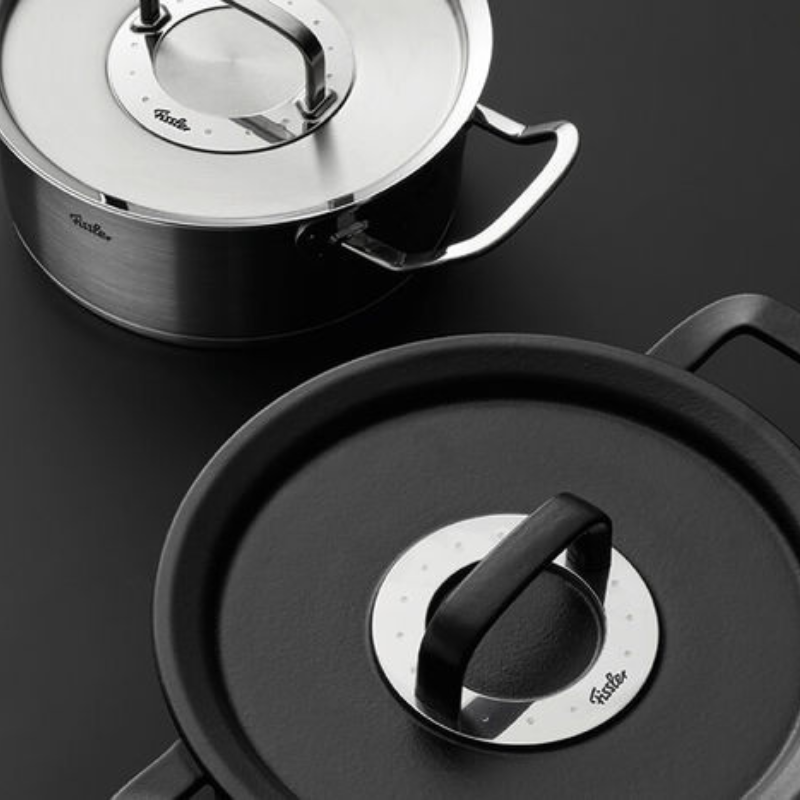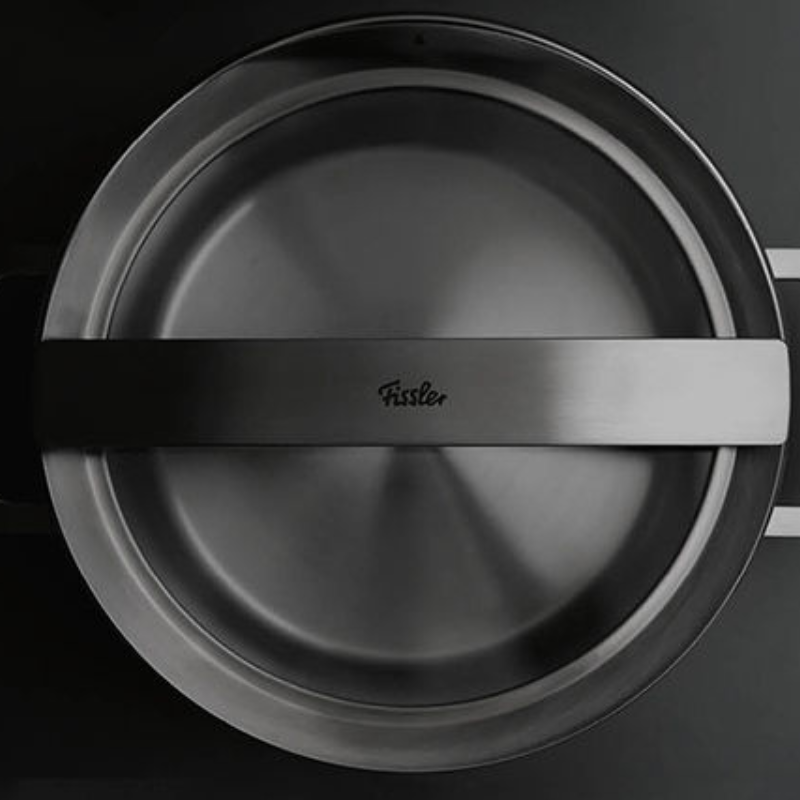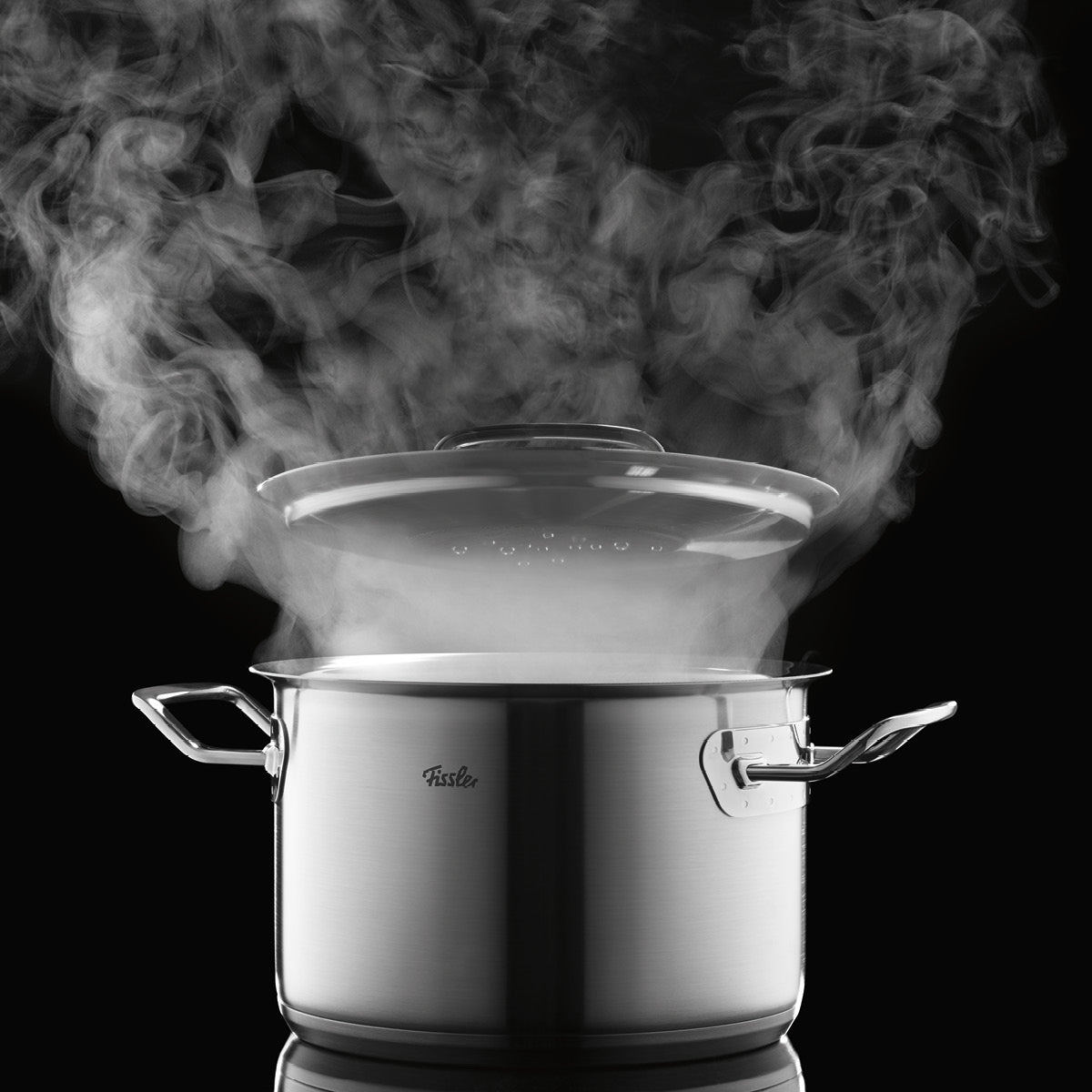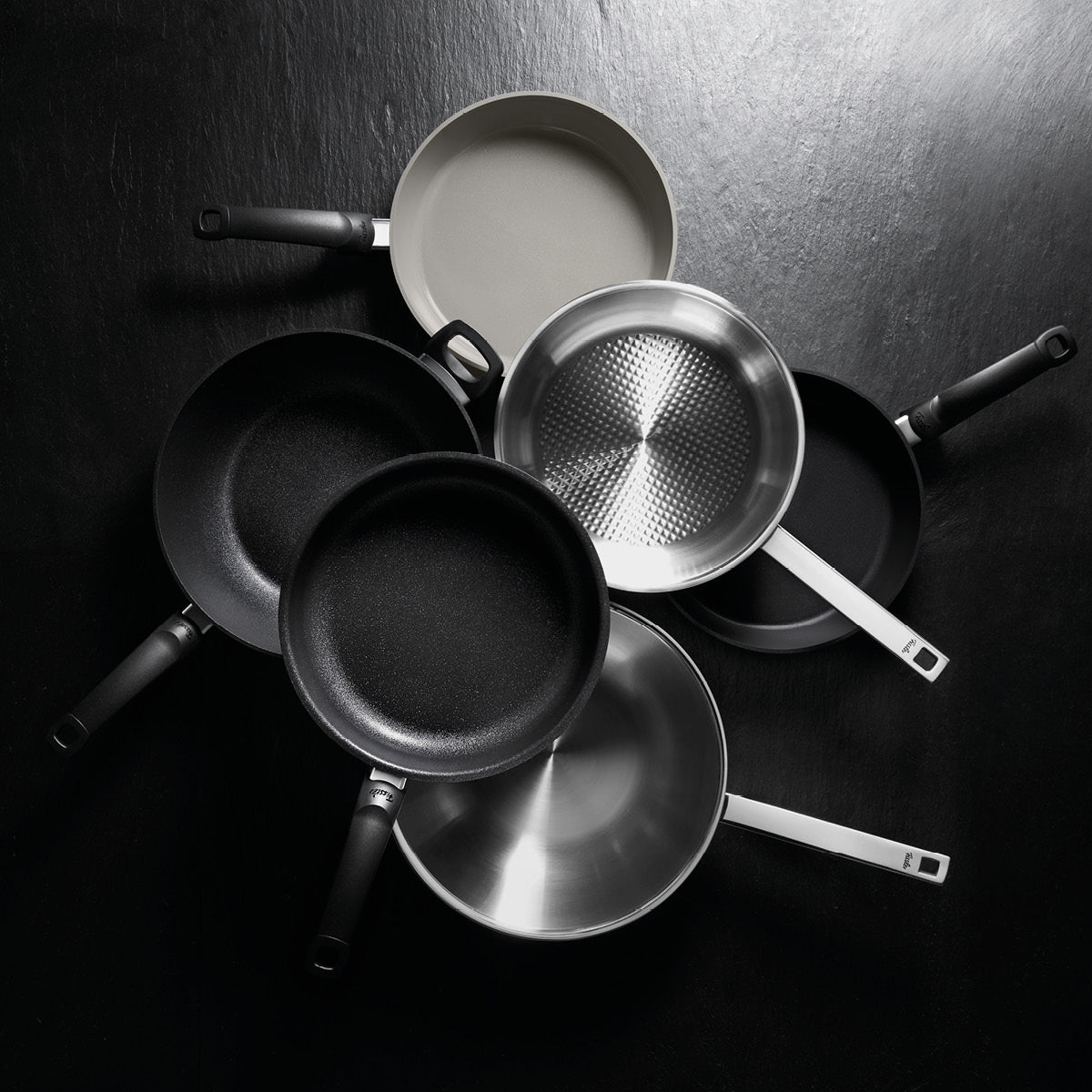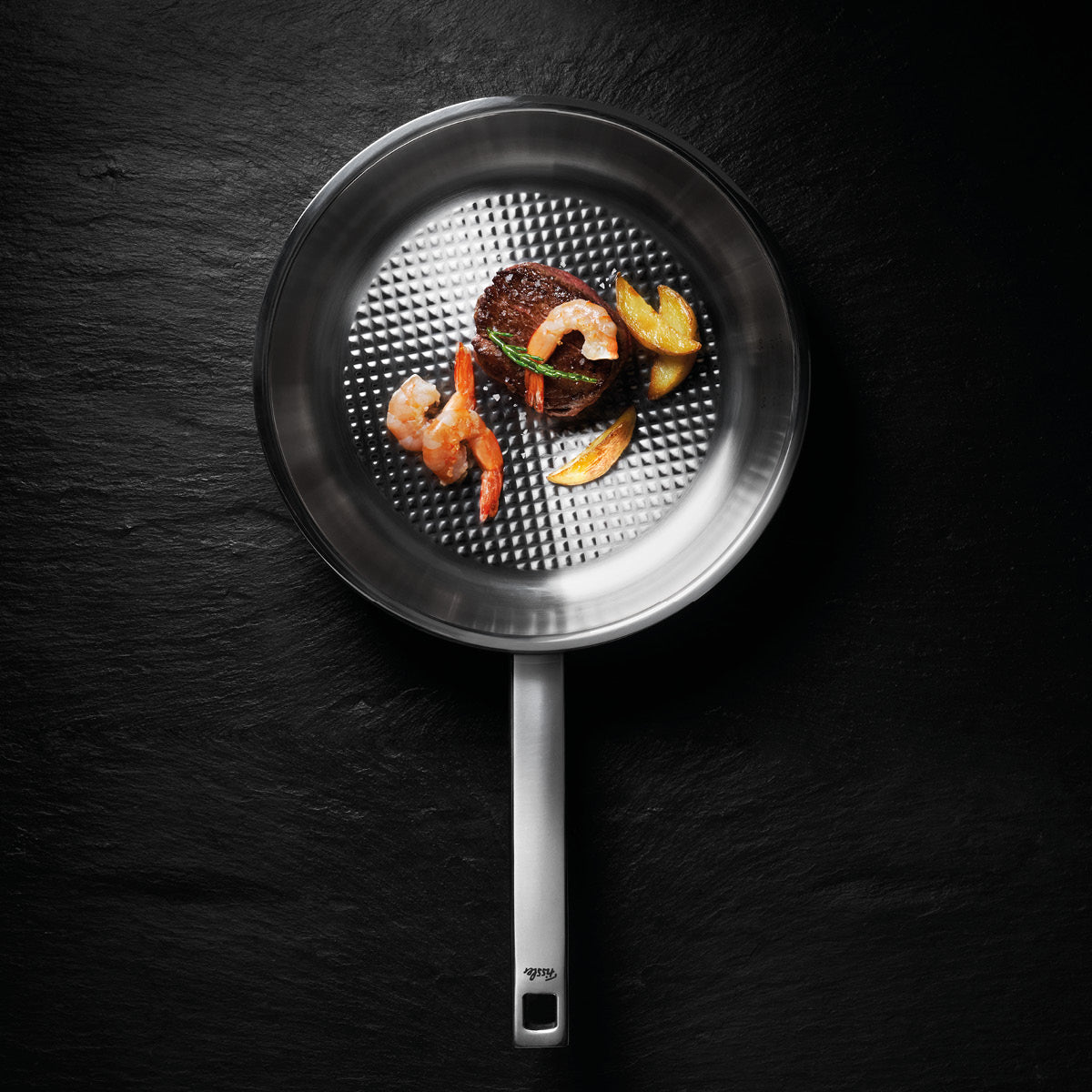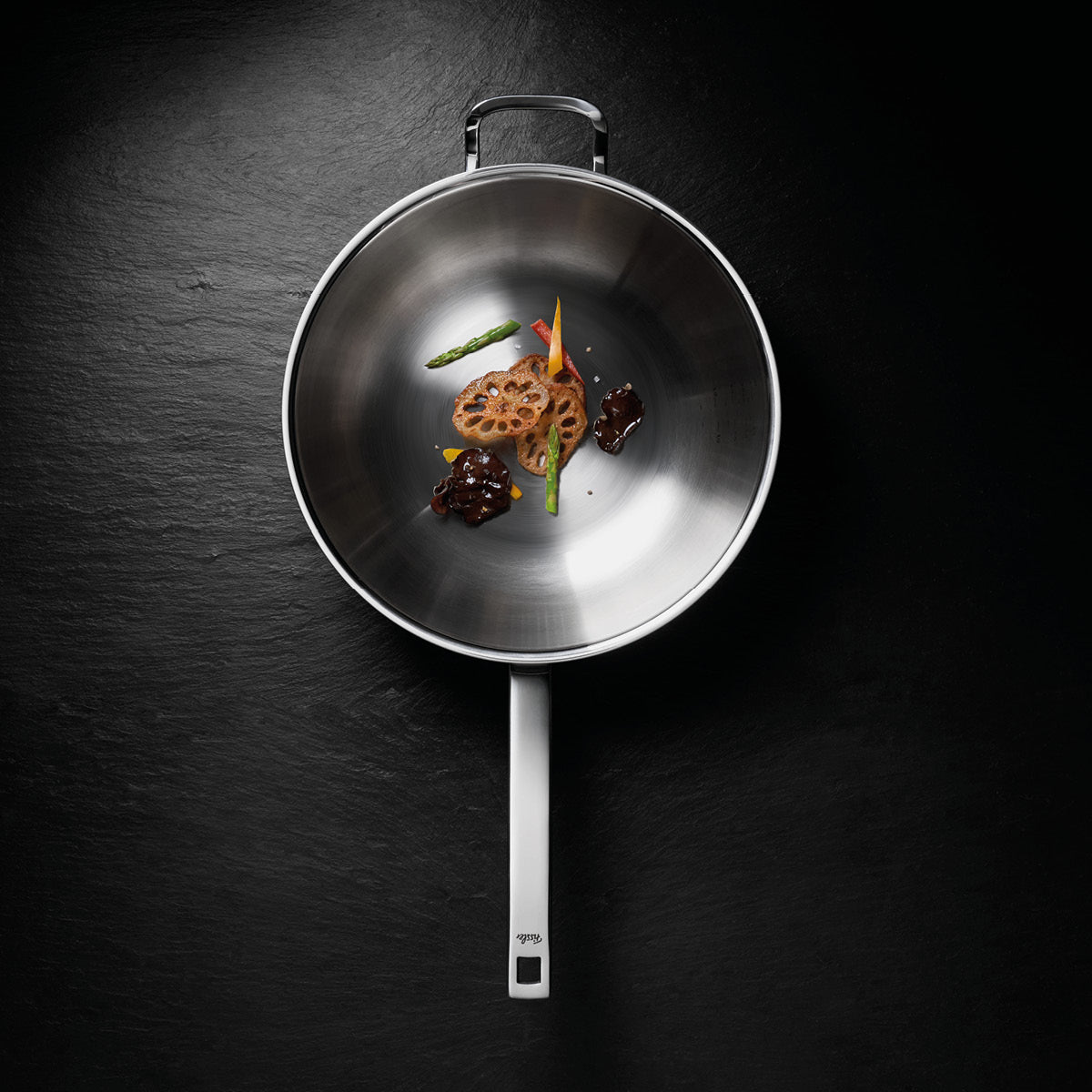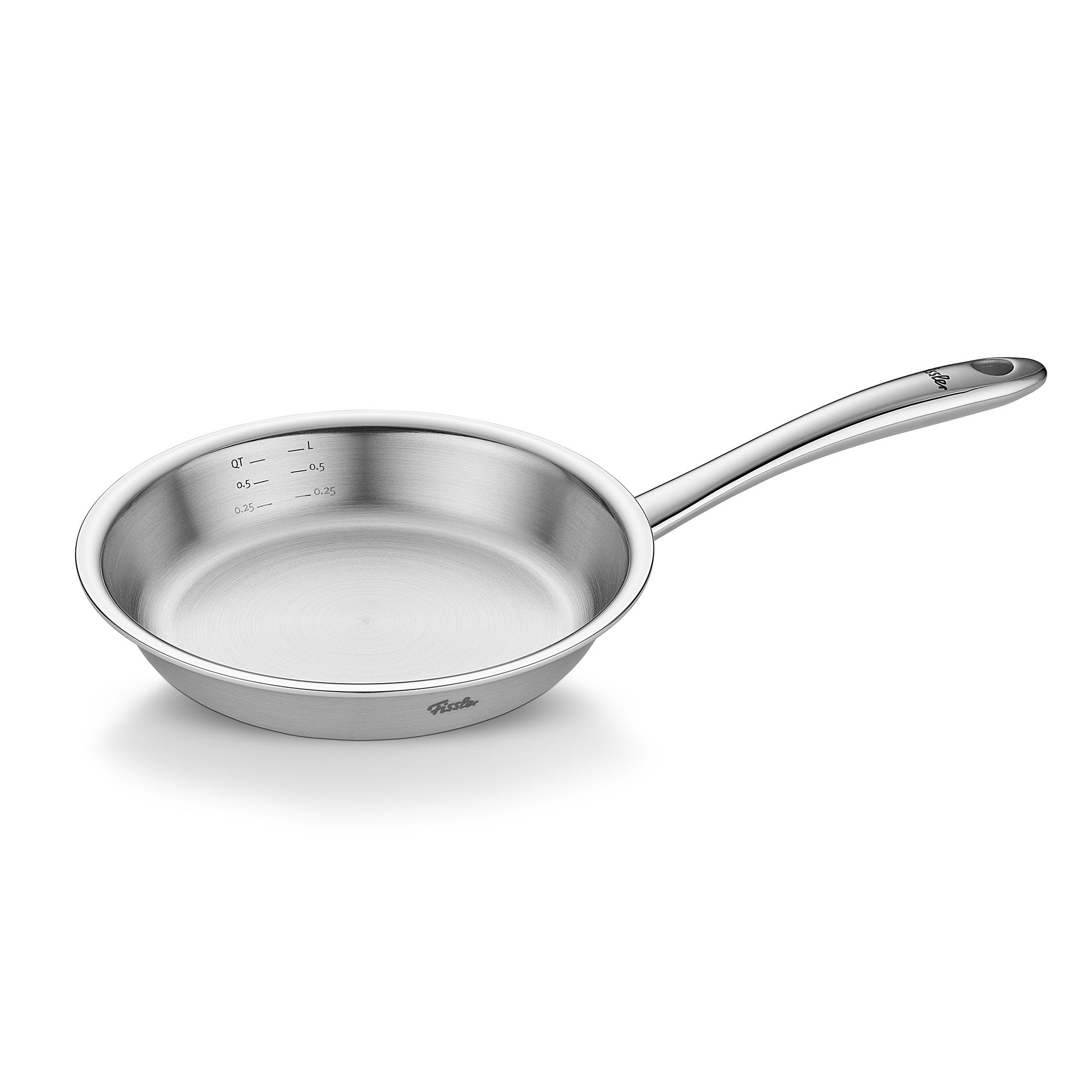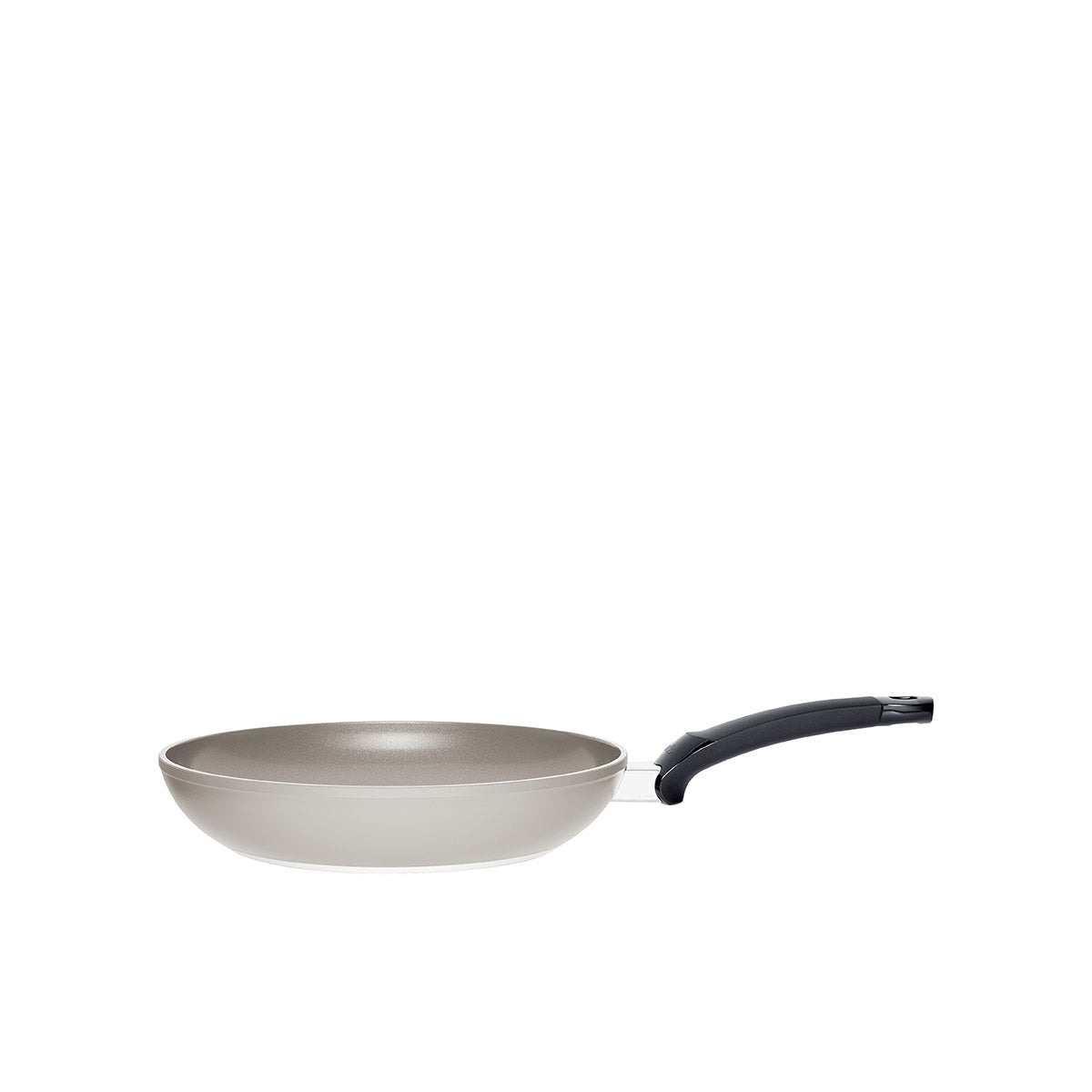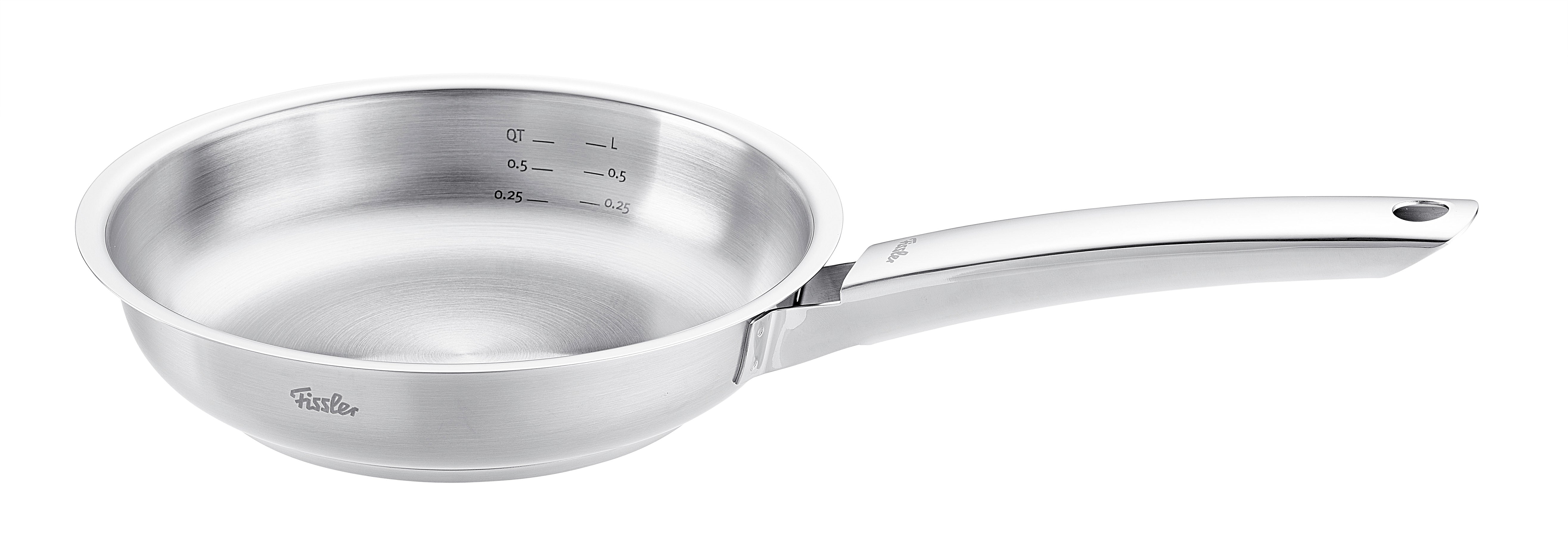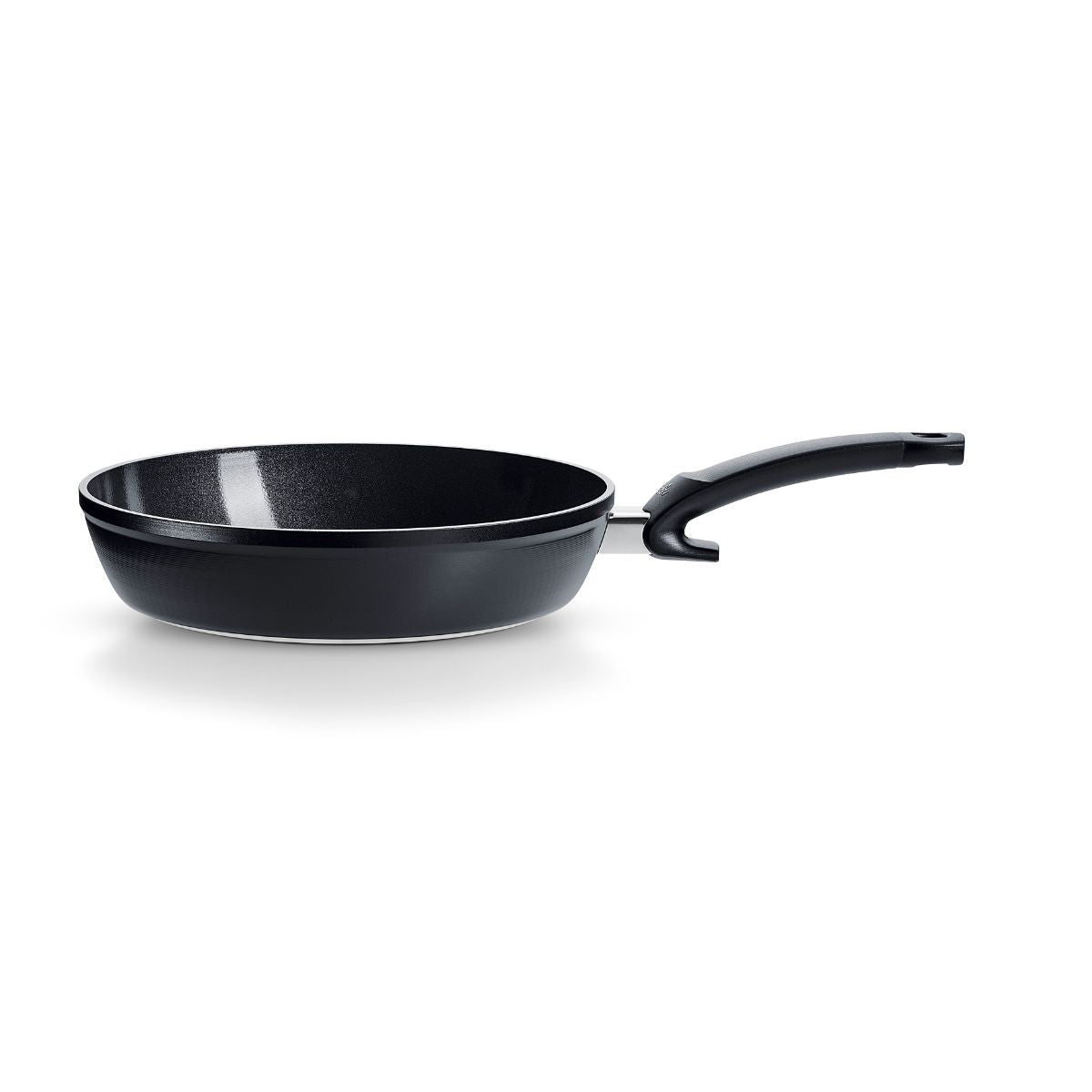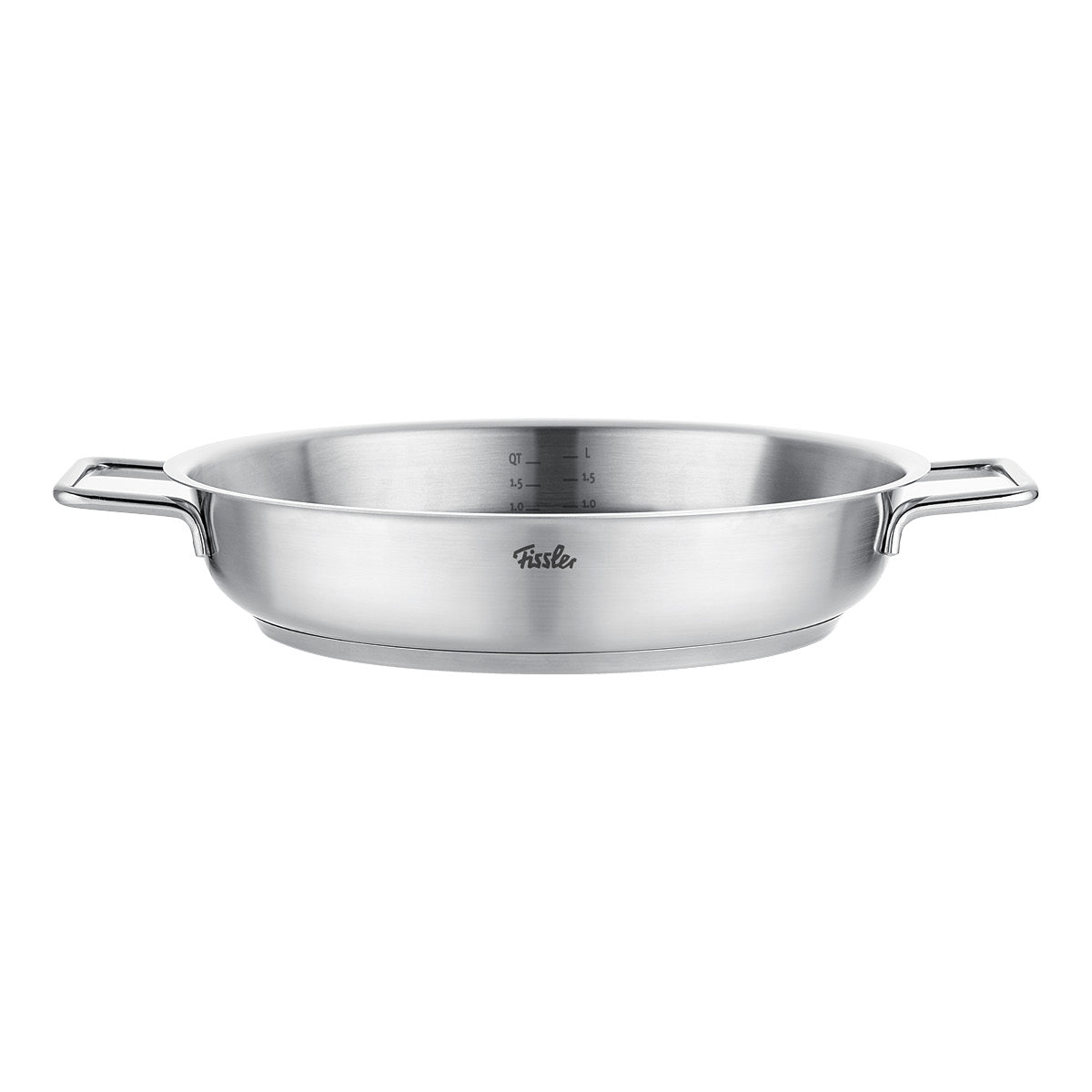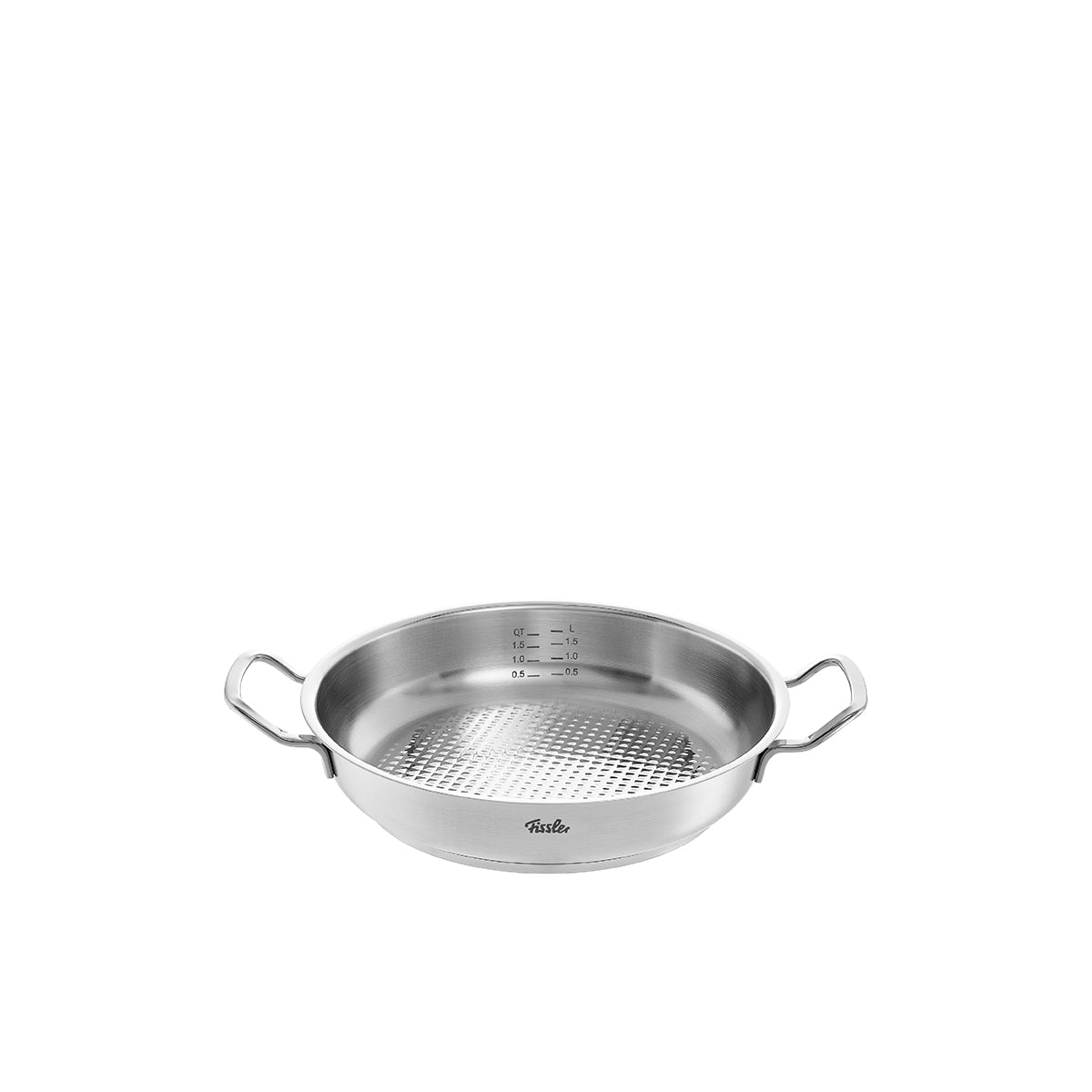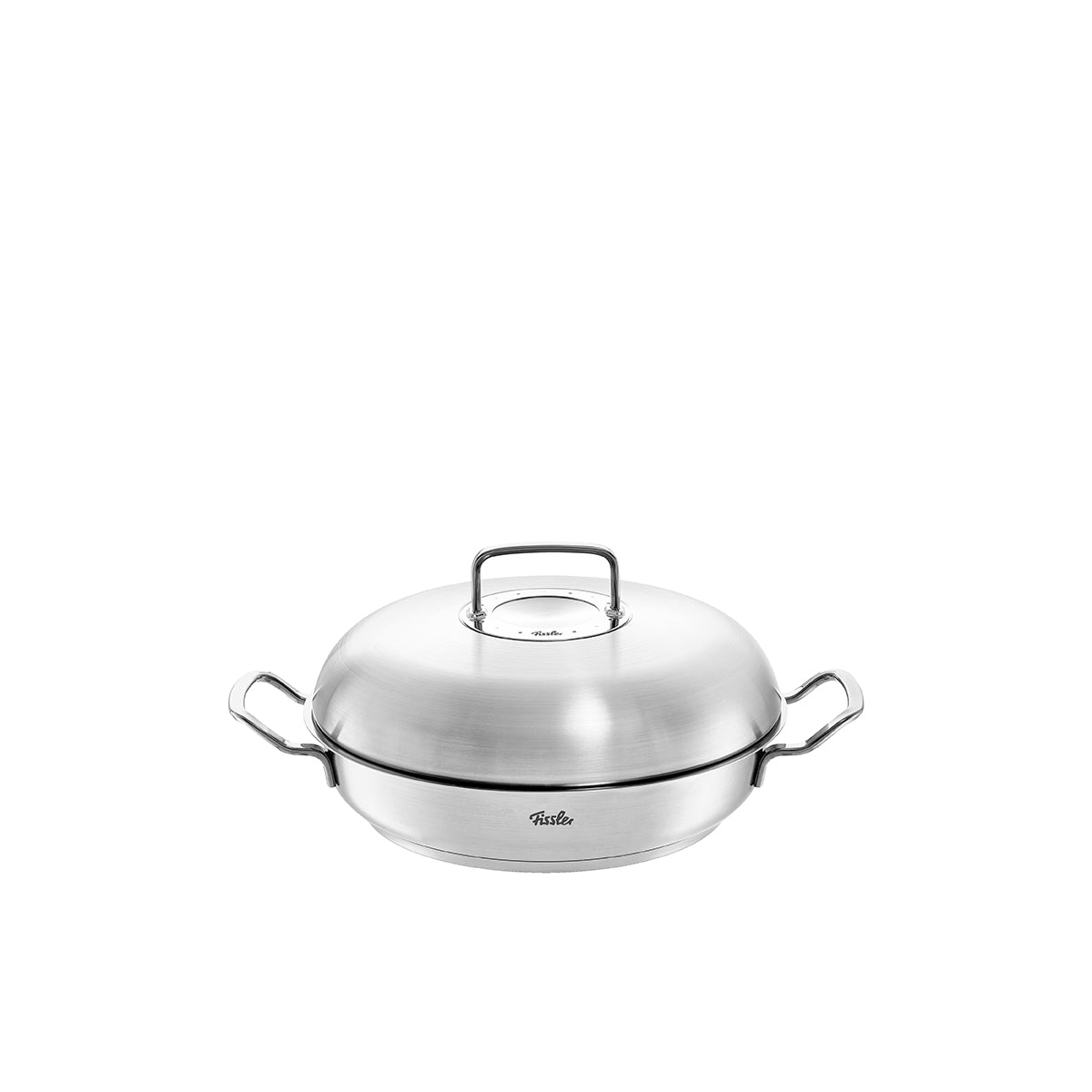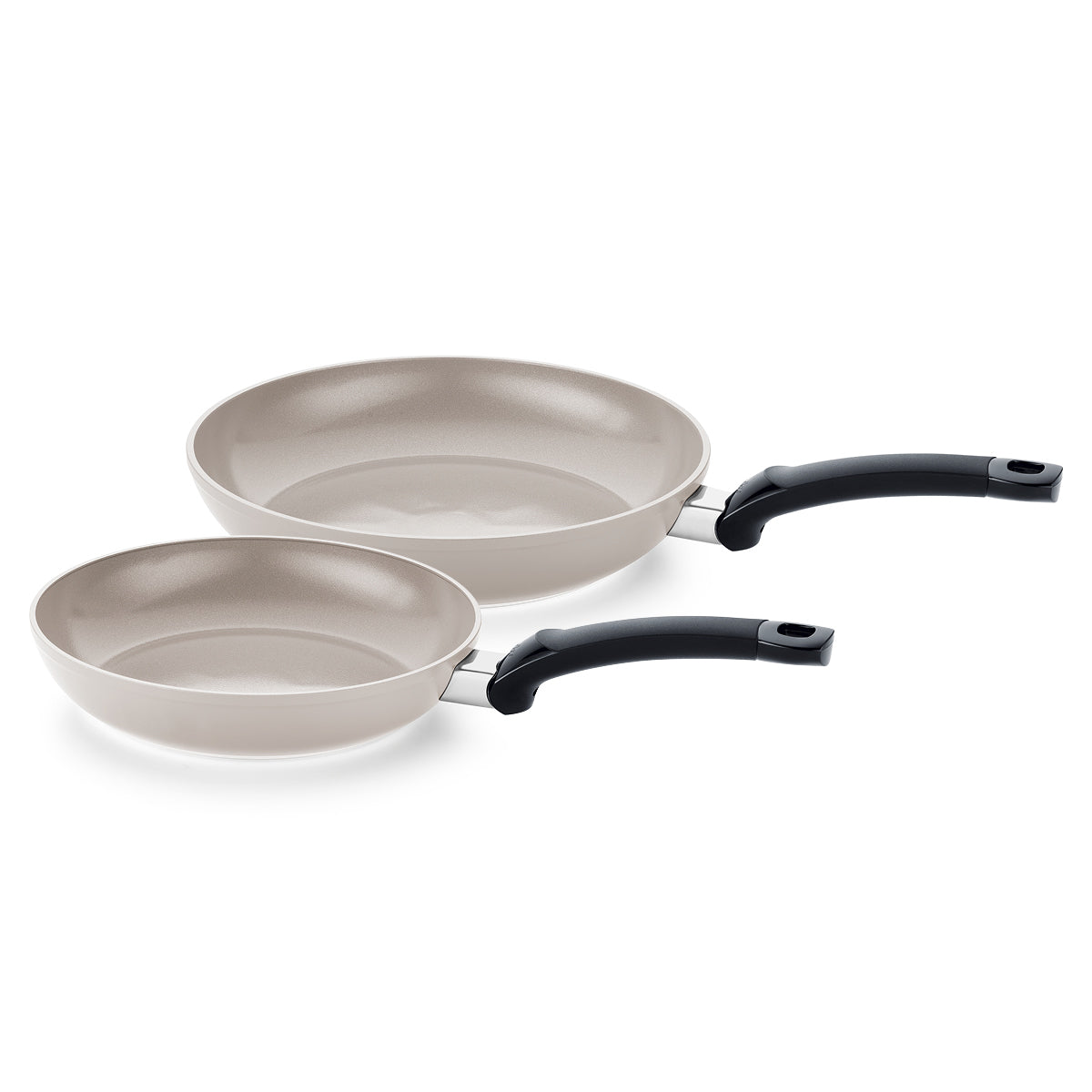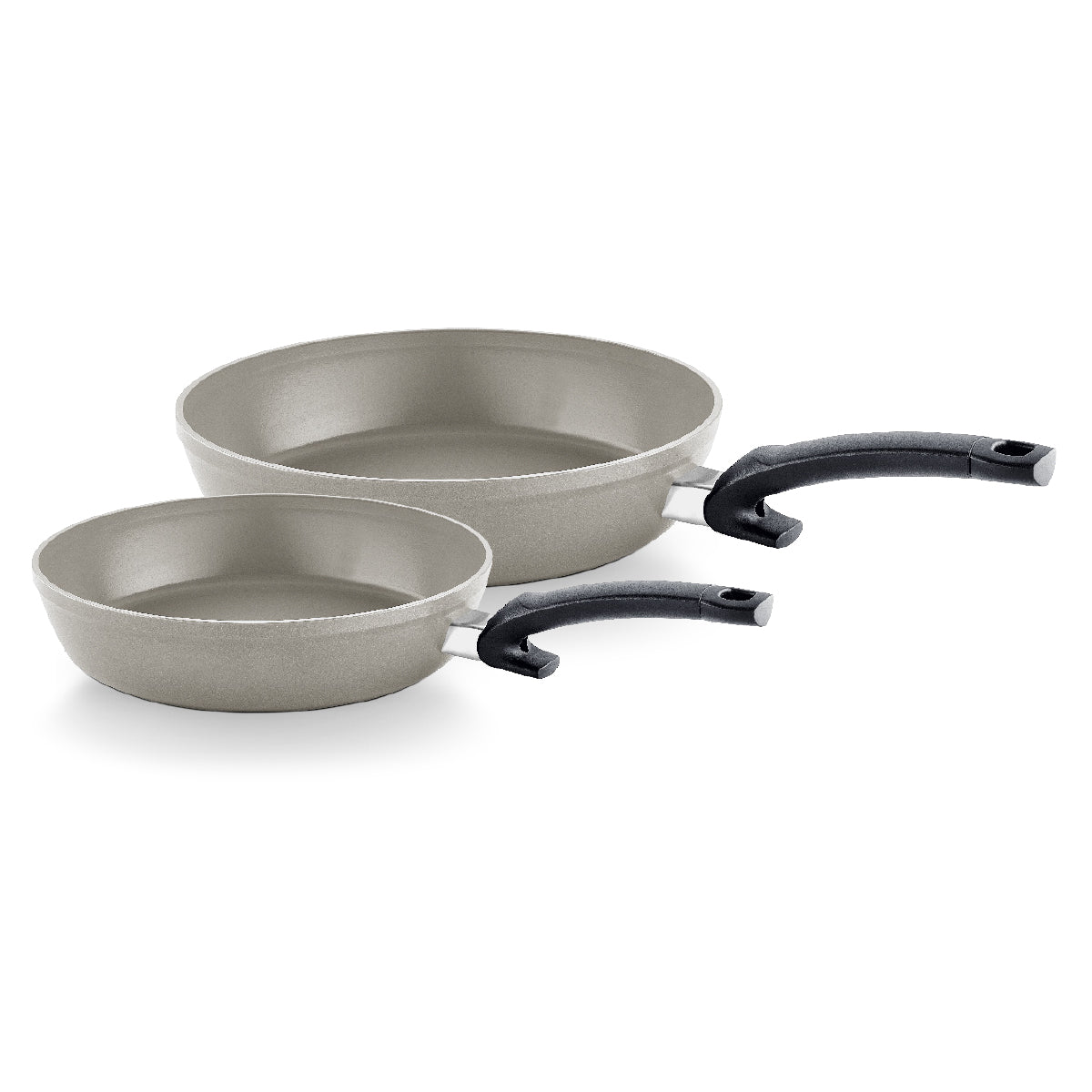To determine the right pan size, first consider what you'll be using the pan for. Do you often cook larger portions for several days or for 2 to 3 people?
Also, the bottom of the pan should match the size of your stovetop burner to ensure even heat distribution. If the base is too large, it may not heat evenly. If the base is too small, energy is lost.
For frying a single egg or a small omelet, a 6.3 in pan is ideal. A 8 in Fissler pan is perfect for two fried eggs or single-portion dishes. A 9.4 in (9.5in) pan fits three fried eggs. For larger portions, we recommend a pan with a 11 in cooking surface.
How to Measure a Frying Pan’s Diameter
The pan diameter is measured at the upper inner edge. This ensures that universal lids fit properly.
The cooking surface is called the “pan base” and is slightly smaller than the stated diameter. A 10.2 in Fissler frying pan offers a cooking surface of 7.48 in in the Classic body and 8.27 in in the Comfort body.

